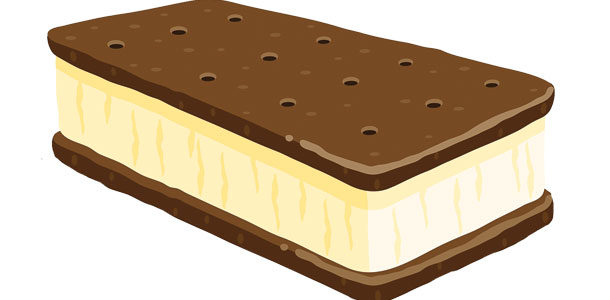A mother’s concern about how an ice cream sandwich failed to completely melt on a hot summer day received media attention that sparked some social media conversations and put the Dairy Management Inc. newsroom team into action.
The team identified a news story of potential concern as part of its ongoing monitoring of social media channels and mainstream media. A Cincinnati television station featured a story and quoted a mother saying “What am I feeding my children?” after an ice cream sandwich her son had left outdoors did not fully melt.
DMI’s newsroom reached out to industry experts and posted a blog to DairyGood.org and its accompanying Facebook and Twitter properties that explained the factors behind ice cream’s melting rate to help set the record straight and show consumers they can trust this dairy product.
“There was a certain shock element to the initial news story that had the potential to gain some traction,” said Jennifer Snyder, DMI vice president of consumer confidence and the newsroom. “We needed to act quickly and provide an answer that there are different melting properties to ice cream designed to prevent a mess when people are enjoying a product such as an ice cream sandwich.
“This offers a good example of how we can monitor and identify potential issues and set the record straight to help keep an issue from escalating to protect consumer confidence in dairy products.”
Additionally, the International Dairy Foods Association (IDFA), which works in partnership with the checkoff on issues monitoring, authored a column for the retailer identified in the news coverage to help answer consumer questions.
“Content has a long shelf life on the Internet,” Snyder said. “All of us working together can offer balance and readily available resources should the story flare up again.” PD

Should I respond?
Yes. If you are asked about the melting rate of ice cream, consider these key points:
- Throughout the years, ice cream companies have discovered ways to improve our favorite frozen treats.
- Experts have found that they can change how ice cream melts. For example, adding FDA-approved guar gum can make certain ice creams thicker and melt more slowly.
- This works perfectly for a number of ice cream treats, including ice cream sandwiches. This allows people to enjoy ice cream without worrying that it’ll melt after only a few bites.
If you are asked about other factors that affect melting, here are points to consider:
- Factors such as the temperature at which ice cream is stored, plus the amount of cream and sugar used, also affect how ice cream melts.
- A slow-melting product allows for the release of delicate flavors as the ice cream is consumed, delivering plenty of flavor.
- Slower melting rates also help prevent ice crystals from forming, which can affect the taste of ice cream.
Test your answer
What factors impact ice cream’s melting rate?
ANSWER: Experts have found that they can change how ice cream melts. For example, adding FDA-approved guar gum can make certain ice creams thicker and melt more slowly. Factors such as the temperature at which ice cream is stored, plus the amount of cream and sugar used, also affect how ice cream melts.
Your Dairy Checkoff in Action – The following update is provided by Dairy Management Inc. (DMI), which manages the national dairy checkoff program on behalf of America’s dairy producers and dairy importers. DMI is the domestic and international planning and management organization responsible for increasing sales of and demand for dairy products and ingredients.




